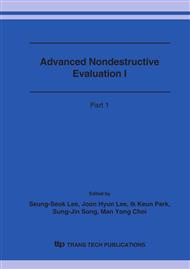p.1560
p.1564
p.1568
p.1572
p.1576
p.1580
p.1585
p.1589
p.1593
Determination of the Hydrogen Concentration in Zr-2.5Nb Alloy by a Resonant Ultrasound Spectroscopy
Abstract:
Zirconium alloys are used for many applications in nuclear components, such as the pressure tube material in a pressurized heavy water reactor, nuclear fuel cladding, etc. One of the problems during the operation of a nuclear reactor is the degradation of the zirconium alloys, which is due to an increase of the hydrogen content in the zirconium alloy. Therefore a non-destructive determination of the hydrogen concentration in zirconium alloy is one of the important issues that need to be addressed. The resonant ultrasound spectroscopy (RUS) technique is evaluated for a characterization of the hydrogen concentration in Zr-2.5Nb alloy. Referring to the terminal solid solubility for dissolution (TSSD) of Zr-2.5Nb alloy, the plot of the mechanical damping coefficient (Q-1) versus the temperature or the deviation of the resonant frequency for the temperature (df/dT) versus the temperature was correlated for the hydrogen concentration in Zr-2.5Nb alloy. It was found that the temperature at an abrupt change of the slope can be correlated with the hydrogen concentration of the Zr-2.5Nb alloy.
Info:
Periodical:
Pages:
1576-1579
Citation:
Online since:
October 2006
Authors:
Price:
Сopyright:
© 2006 Trans Tech Publications Ltd. All Rights Reserved
Share:
Citation:


